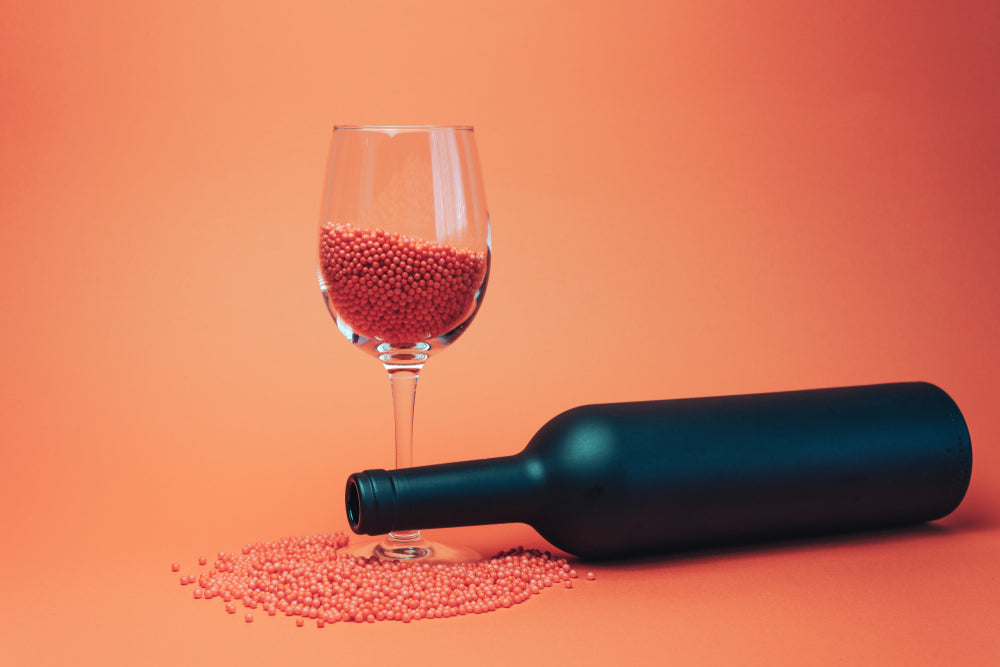
Everything You Need to Know About Fake Wine
Let’s face it: fake wine is out there. If people are willing to pay hundreds—sometimes even thousands—of dollars for a bottle of fermented grape juice, someone will be tempted to take advantage of them.
But we have good news. Not all wine styles are counterfeited very often. Inexpensive and moderately priced wine is rarely worth falsifying. There's a good chance the wine you enjoy is authentic. However, if you’re a wine collector or enjoy premium wine often—especially from older vintages—you should know about fake wine and how people fall for it.
Types of Wine Fraud
Wine fraud can take many forms. At a winery level, wine producers can mislabel their wine or fake its provenance, filling their bottles with something less prestigious—whether it’s wine from a less favorable site or made with less distinguished grapes. Governments oversee producers in wine appellations and sometimes even test the wine to ensure its authenticity. However, with millions of wineries worldwide making wine at the same time of year, it's impossible to know what everyone does behind closed doors.
Adulteration
Adulteration is the most common type of wine fraud at the retail level. It consists of partially or totally refilling wine bottles with something other than what the label says. In the best-case scenario, they’re filled with cheaper wine. Adulteration is particularly dangerous for the risk of consuming harmful chemicals, like the bad type of alcohol. Thankfully, adulterated bottles are often easy to spot. After all, high-quality wine is sealed, and bottles tampered with are usually easy to spot. To prevent this type of fraud, purchase wine from reputable sources, and never accept opened bottles at restaurants.
Counterfeiting
Counterfeiting is a much more sophisticated type of wine fraud. In this scenario, the counterfeiter sells fake wine, sometimes re-purposing or reprinting labels or using authentic empty bottles. Investigating the wine's provenance is usually the best way to spot a counterfeit. If you bought yours from someone's car trunk, you probably already know the wine is fake. But if you purchase counterfeit wine from a reputable source, like a well-known merchant or auction house, there's a good chance you'll be fooled.
Investment Scams
A third indirect type of wine fraud involves wine investment firms. These schemes are not dissimilar to any corporate or financial scam. The difference is the perpetrators rely on your passion for wine to hook you in. Remember, there's no such thing as free money. If an investment opportunity sounds too good to be true, it probably is.
Famous Wine Scandals
Undoubtedly, the most famous recent wine fraud involves Rudy Kurniawan, a wine expert who became good friends with influential people known for enjoying exclusive and rare wine. Mr. Kurnaiwan's plan was meticulous. He effectively opened the doors to the elite world of fine wine by purchasing millions of dollars worth of wine at auction and selling it to his friends.
With empty bottles of expensive wine piling up, Mr. Kurniawan began to recondition and refill them, only to sell them again. Mr. Kurniawan got greedy when he started selling wine that had never existed in the first place, including a few Domaine Ponsot bottles. Mr. Ponsot himself called him out, and he was arrested soon after.
Another interesting wine fraud case is known as Brunellopoli. Producers in Brunello di Montalcino allegedly added wine made with unauthorized grapes to their blends. Brunello is famous for being (supposedly) 100% Sangiovese.
Wine fraud isn't rare, either. In 2021, Vincent Lataste, a wine merchant in Bordeaux, was sentenced to a year in jail for selling mislabeled wine. Several estates were involved in the drama. We know about this case because he was caught. But how many cases have gone unnoticed?
How to Spot Counterfeit Wine
Wine fraud is something to be aware of, but it shouldn't change your wine-drinking habits. Wine scandals only make the systems to prevent fraud stronger. Auction houses, for example, will now double-check the wine's provenance before putting it up for sale. Besides, sophisticated techniques are used to spot counterfeit wine, including inspecting the wine label under a microscope and using UV light. The light makes paper printed after the 1950s glow.
However, you don't need special equipment to determine if a bottle of doubtful origin is original. Looking for inconsistencies in the bottle and cork is essential. Are the stains on the label natural, or were they printed? And how about the cork? Does it have the winery's logo?
Finally, well-aged wine looks old. Expect sediments, a copper or brick hue, a stained cork, and less liquid than normal due to evaporation. And of course, buy wine from a reliable source to avoid purchasing a counterfeit bottle.
Enjoy Authentic Fine Wine
Unsurprisingly, people go to great lengths to adulterate and counterfeit fine wine; after all, few things in life are more pleasurable than a glass of the good stuff, and people are very passionate about it. Where there’s passion, there are irrational decisions.
To make the most out of real Brunello, authentic Napa Cab, and true Burgundy, you must enjoy it from the right glassware. Grassl wines, artisan mouthblown pieces, are designed to elevate the experience of drinking your legitimate wine collection.
